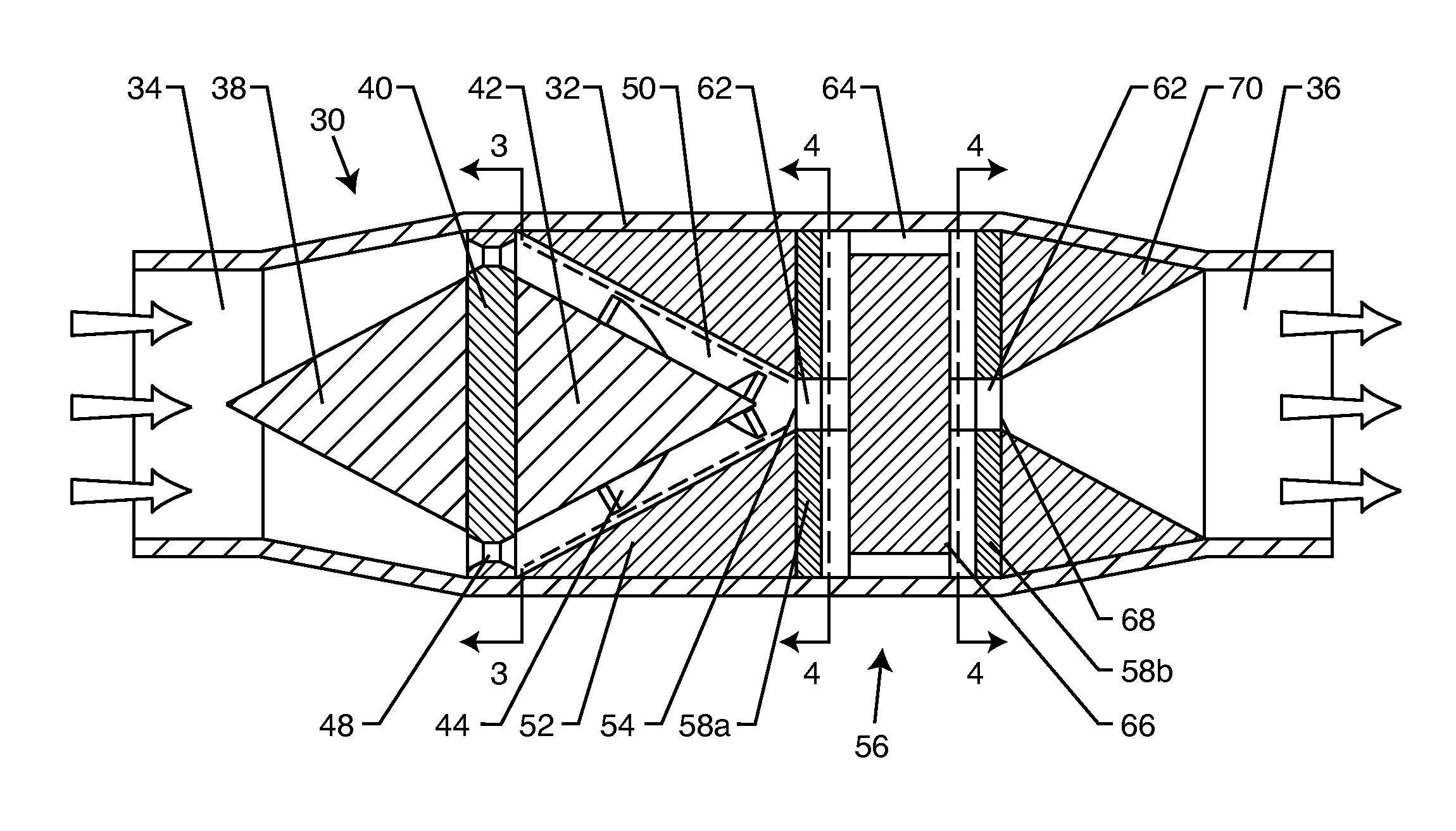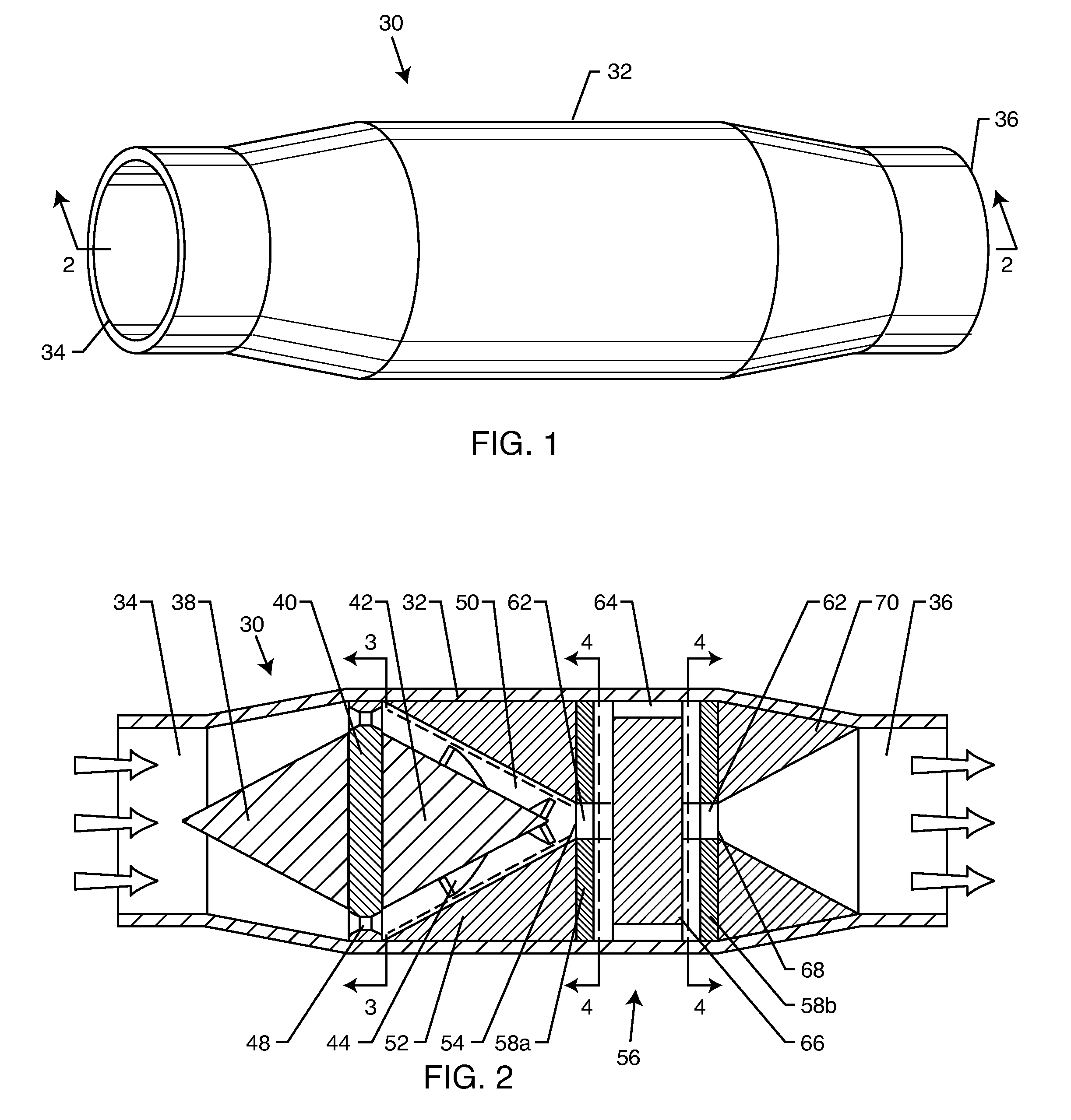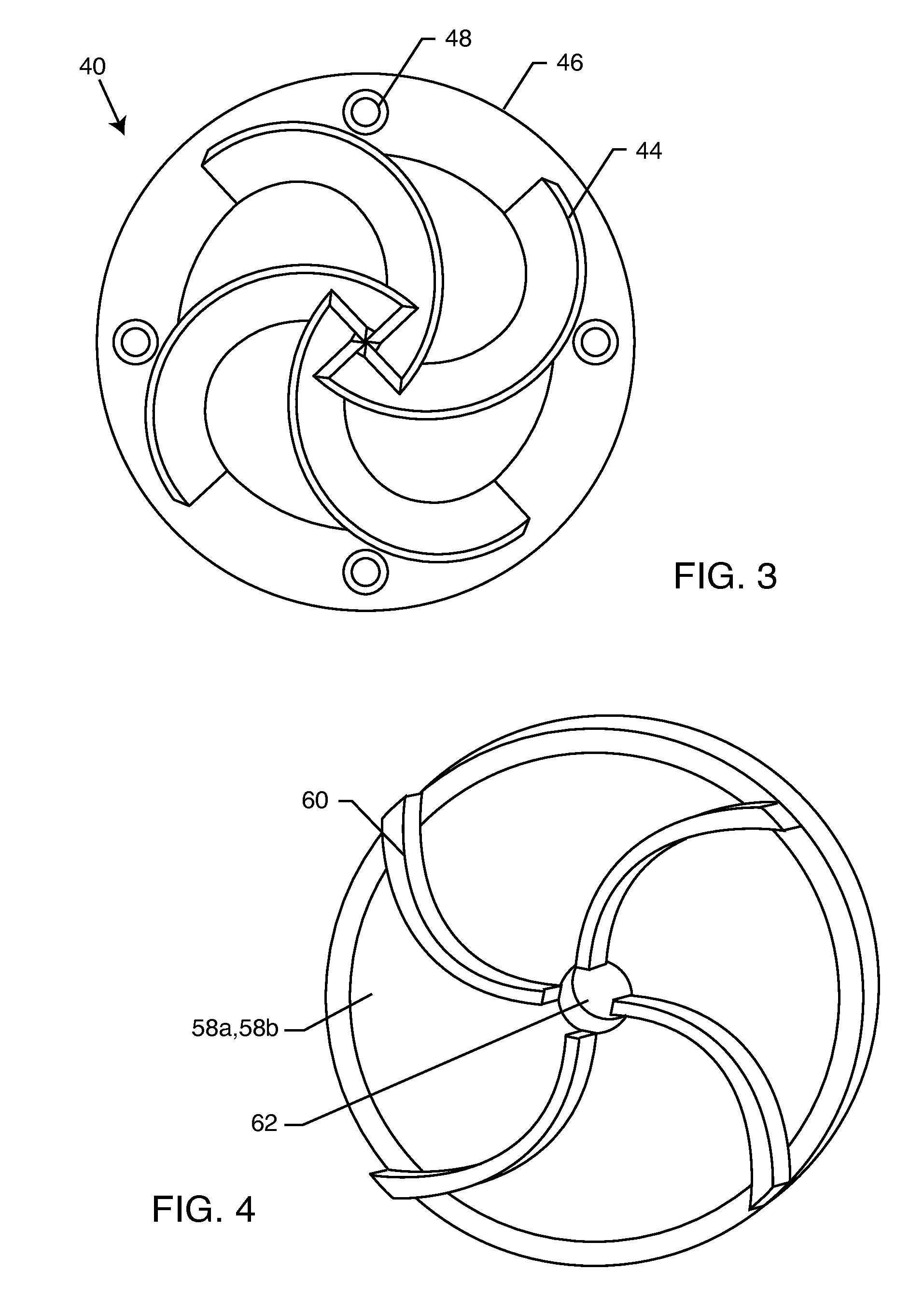Flow-through cavitation-assisted rapid modification of beverage fluids
a technology of beverage fluids and cavitation, which is applied in the direction of fatty acid chemical modification, milk preservation, tea extraction, etc., can solve the problems of complex process during wine aging, slow aging, and high cost, and achieves enhanced process, smooth taste, and high pressure
- Summary
- Abstract
- Description
- Claims
- Application Information
AI Technical Summary
Benefits of technology
Problems solved by technology
Method used
Image
Examples
Embodiment Construction
[0068]The detailed embodiments of the present invention are disclosed herein. However, it should be understood, that the disclosed embodiments are merely exemplary of the invention, which may be embodied in various forms. Therefore, the details disclosed herein are not to be interpreted as limiting, but merely as the basis for the claims and as a basis for teaching one skilled in the art how to make and how to use the invention.
[0069]The present invention is directed to a method for manipulating beverages to obtain desirable changes therein. The method comprises subjecting the beverage to a flow-through hydrodynamic cavitation and / or continuing the repeated application of the flow-through hydrodynamic cavitation for a duration sufficient for the cavitation to convert a beverage into a consumable product with the desired characteristics. The beverage may be an alcoholic or non-alcoholic beverage. The application of the flow-through hydrodynamic cavitation is optimized to obtain a fla...
PUM
| Property | Measurement | Unit |
|---|---|---|
| frequencies | aaaaa | aaaaa |
| ultrasonic frequency | aaaaa | aaaaa |
| diameter | aaaaa | aaaaa |
Abstract
Description
Claims
Application Information
 Login to View More
Login to View More - R&D
- Intellectual Property
- Life Sciences
- Materials
- Tech Scout
- Unparalleled Data Quality
- Higher Quality Content
- 60% Fewer Hallucinations
Browse by: Latest US Patents, China's latest patents, Technical Efficacy Thesaurus, Application Domain, Technology Topic, Popular Technical Reports.
© 2025 PatSnap. All rights reserved.Legal|Privacy policy|Modern Slavery Act Transparency Statement|Sitemap|About US| Contact US: help@patsnap.com



